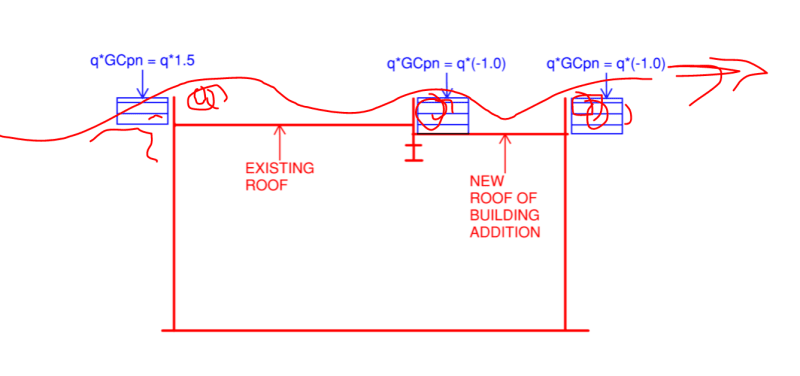Hello,
I have a question regarding parapet wind loading. I have a situation on a project where the application of parapet wind loads is not very clear per Code.
I am working on a project featuring an east building addition to an existing 100 year old building. The east wall of the existing building will be demolished in order to facilitate clear transfer between both buildings. As such, at the transition between the existing roof and the new roof there will be a built up curb of some sort, essentially an "interior" parapet. I am trying to not add additional wind load into the existing building structure (i.e., more than 10%), so I am curious as to how you all would handle the application of wind loads in this case. Attached is a sketch of how I am currently handling the wind loads, but I am wondering if it is too conservative (or not) to apply a leeward parapet pressure twice in this case.
I look forward to hearing your thoughts!
I have a question regarding parapet wind loading. I have a situation on a project where the application of parapet wind loads is not very clear per Code.
I am working on a project featuring an east building addition to an existing 100 year old building. The east wall of the existing building will be demolished in order to facilitate clear transfer between both buildings. As such, at the transition between the existing roof and the new roof there will be a built up curb of some sort, essentially an "interior" parapet. I am trying to not add additional wind load into the existing building structure (i.e., more than 10%), so I am curious as to how you all would handle the application of wind loads in this case. Attached is a sketch of how I am currently handling the wind loads, but I am wondering if it is too conservative (or not) to apply a leeward parapet pressure twice in this case.
I look forward to hearing your thoughts!

